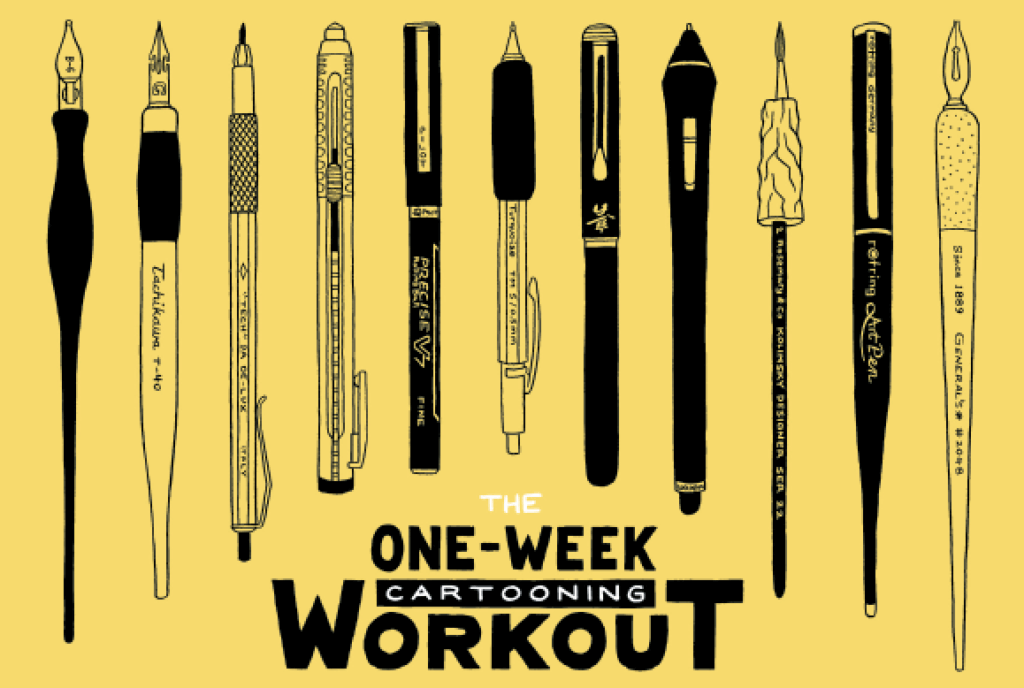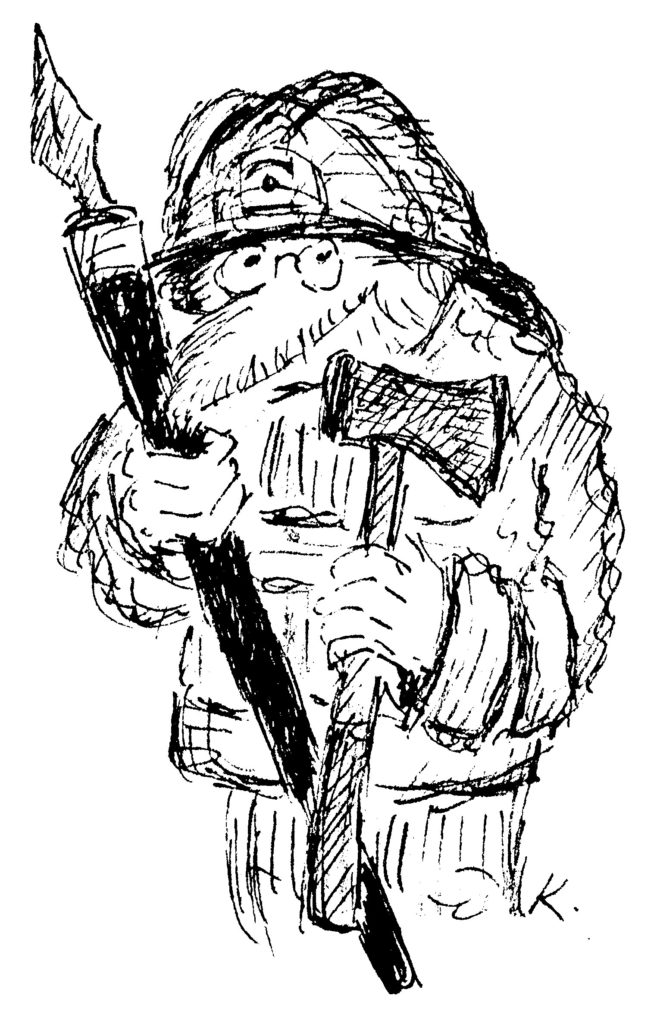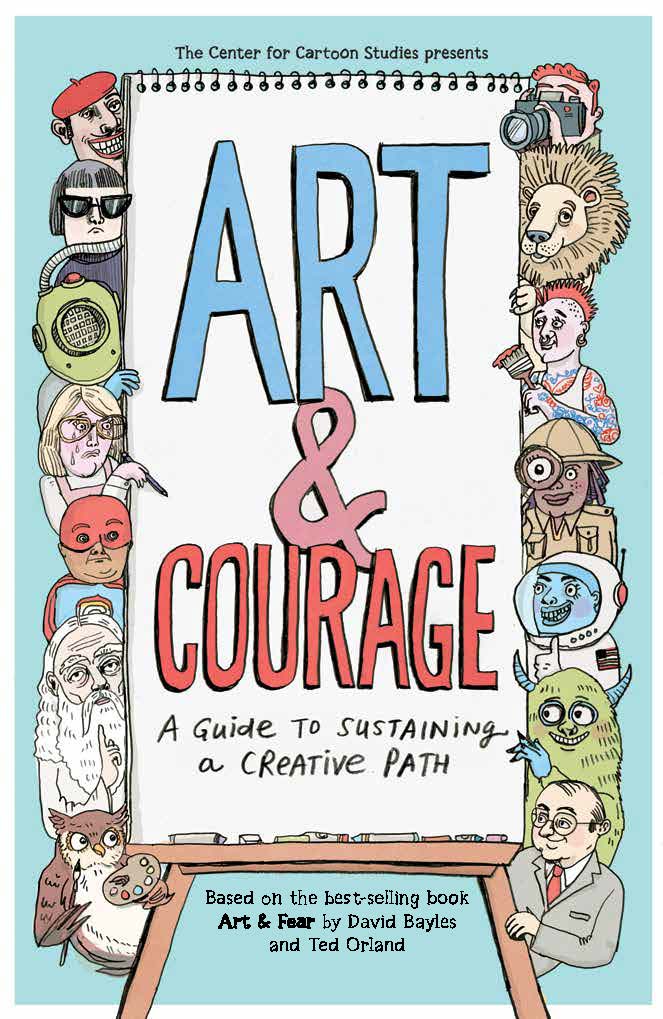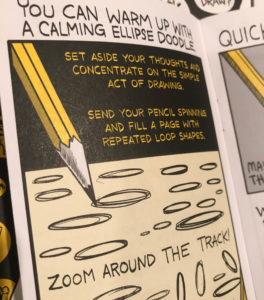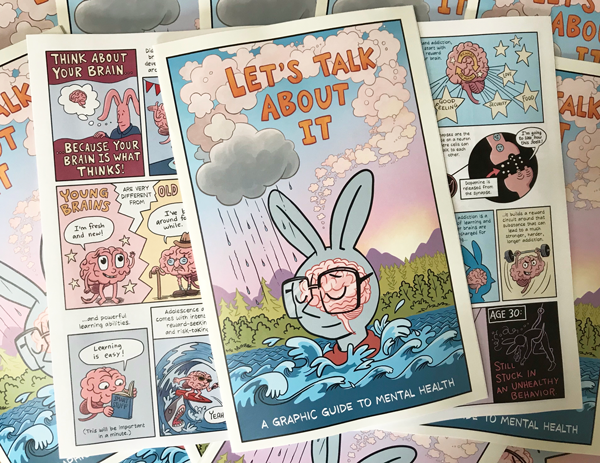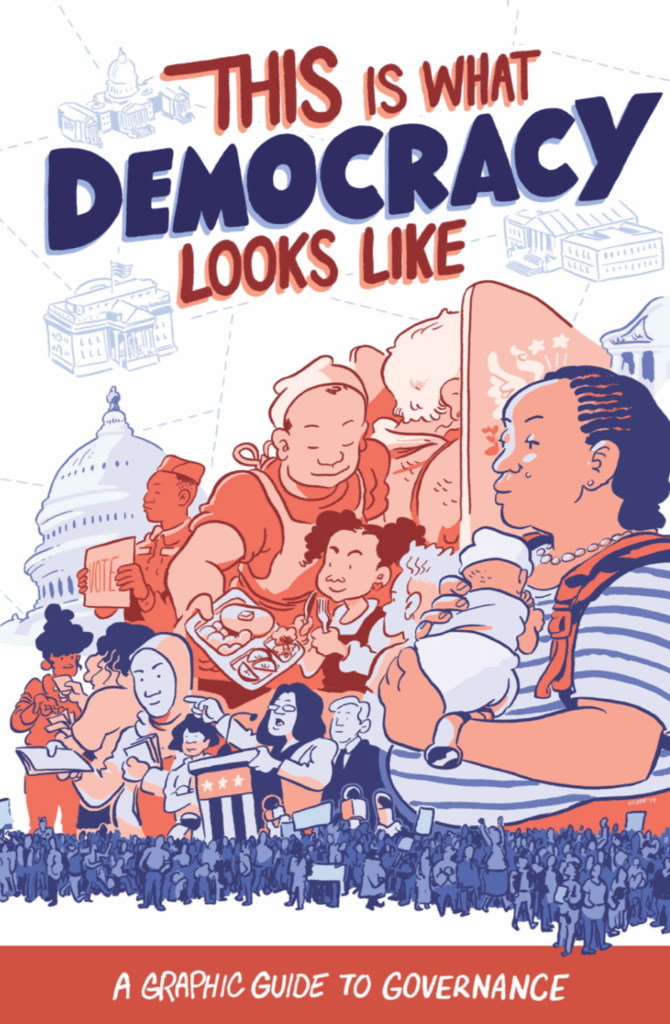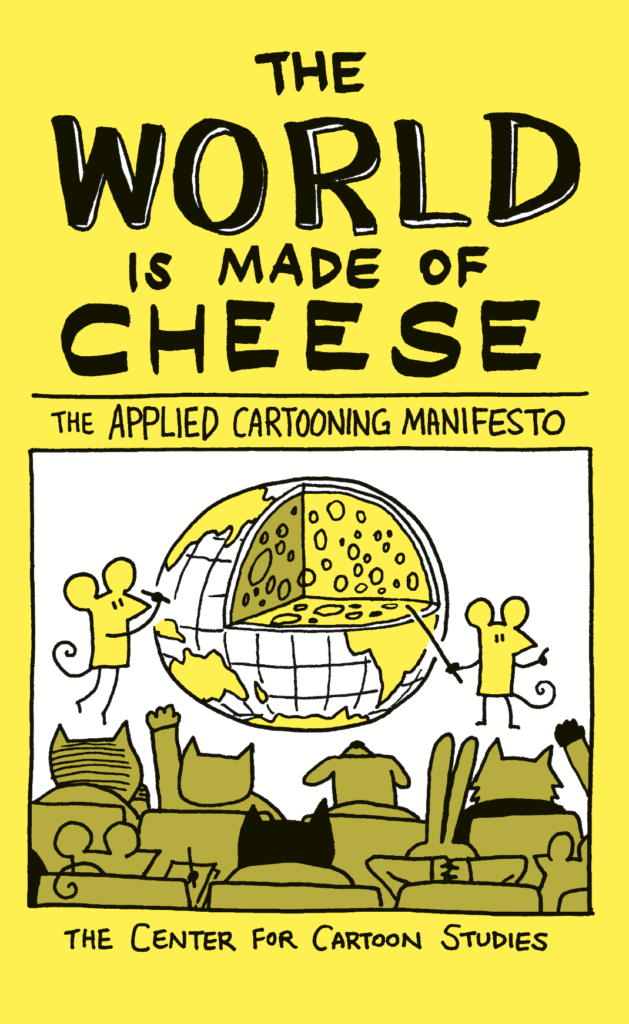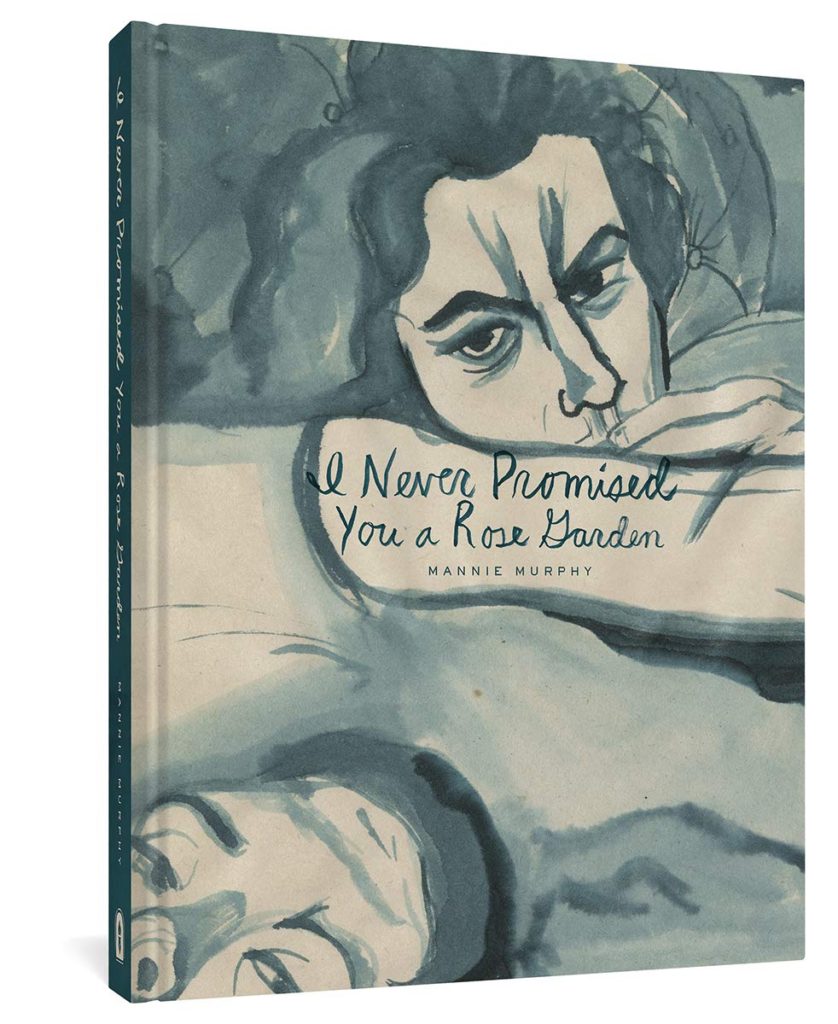
Mannie Murphy ’08 has released their graphic novel, I Never Promised You a Rose Garden, out from Fantagraphics on March 23. A native of Portland, OR, they originally published this graphic nonfiction as a series of zines. The story starts with the life and death of River Pheonix before tackling the history of white supremacy in Portland. They gave the following interview with Angela Boyle ’16.
What was the inspiration to create this as an illustrated diary instead of a more traditional panel-based comic or straight prose?
I was feeling really depressed and dejected around Fall 2015. I got to thinking about River Phoenix, as I always do around Halloween, the anniversary of his death. I was also thinking about Mulugeta Seraw who was murdered around this time of year. I started painting pictures of River Phoenix on newsprint paper that was lined, with a space on top for a picture. When I realized I was making a comic, I had at first envisioned it as kind of a school report. The illustrated diary aspect is something that just kind of came with the format.
How much planning went into each page? For example, was it off the cuff or Did you thumbnail pages and try different approaches first? What was your process for a zine’s worth of pages (i.e., page by page or chapter by chapter)?
I didn’t thumbnail. I made lists. Lists of pictures and lists of things I wanted to include in the writing. I mostly worked from photographs and movie and video stills, so when I started working on a chapter, I would collect all the visual references I needed. Then I would start drawing and just draw picture after picture that I knew I wanted to include in the finished comic. Then I would assemble the pages like a mixtape into a cohesive story of pictures. Then I would sort of free-write in the lined space below the image, like a stream of consciousness. So I don’t have any drafts of the writing, I just put it right down on the page. Then, if I needed to, I would edit the lettering in Photoshop. Some of the lettering mistakes I just left in there, from the urgency of just needing to get the comic done and out there.
How much research was involved in this book?
Lots of research. Books, movies, youtube videos, magazine and newspaper articles, interviews, movie reviews. Two main references I used for the first half of the book were the books Last Night at the Viper Room: River Phoenix and the Hollywood He Left Behind by Gavin Edwards; and A Hundred Little Hitlers: The Death of a Black Man, the Trial of a White Racist, and the Rise of the Neo-Nazi Movement in America by Elinor Langer. I also relied heavily on stills from My Own Private Idaho and Drugstore Cowboy. For the rest of the book, I amassed a ton of other references. I have included an extensive bibliography in the book listing all of my sources.
What was your favorite part of creating this particular story?
My favorite part of making this book was the drawing. Writing, letterin—I bite my nails and fret, I hunch over the page and my fingers cramp and I pretty much hate it. But the drawing, drawing page after page, image after image, was just bliss. I draw with a paintbrush using water-soluble ink. I didn’t use any pencils, I just did straight ink onto the newsprint. I like the way my illustrations look better when I don’t use any pencils. I didn’t let myself do any redraws, I just kept the mistakes in perspective, or a wonky portrait, because I knew if I didn’t, I’d never finish. I can be such a perfectionist, but then I never get anything done. So I just plodded on and got into the bliss of it.
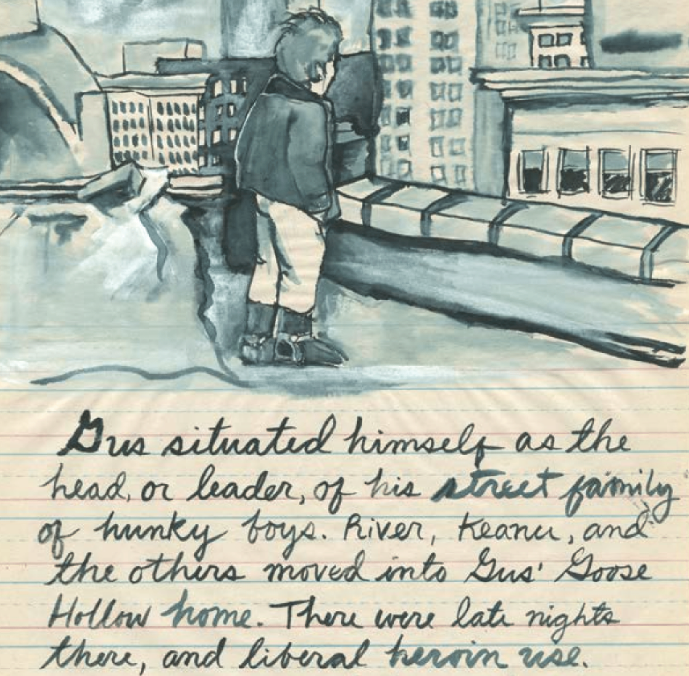
Where did you find the paper you drew on?!
Haha! I found the paper at a creative reuse place in Portland called SCRAP. I love drawing and painting on old paper, and they have a lot of it there. I later learned that it’s called “story paper” and you can order it through most office supply stores.
Did you discuss with anyone that they no longer teach cursive in schools?
The cursive was a non-issue for Fantagraphics. In a way I wanted the comic to feel slightly prohibitive, like maybe you have to work to make out some of the words, giving you the feeling that you really are reading somebody’s diary—in this case, with the author’s permission. There was somewhat of an age-range that I was writing for, somewhere around 35-55, and though I wasn’t consciously orienting the writing to them in that way, I was writing under the assumption that they could read it.
Are you already working on your next project?
I am working on a comic right now that is based on a book by Sigmund Freud detailing one of his most infamous case studies, the patient Dora. It is in a completely different style than Rose Garden. Done with pencils and black-and-white ink, it is much more cartoony and uses a traditional comics grid and panels, word balloons, etc. It is a full-length graphic revisioning of Dora’s story, and I’m about halfway through.
For more information about Mannie’s book or to buy your own copy, head over to Fantagraphics or order it from a local comic or book shop!
Tags: CCS Alum, Fantagraphics, Graphic Novel, I Never Promised You a Rose Garden, interview, Mannie Murphy, new book, nonfiction comics
